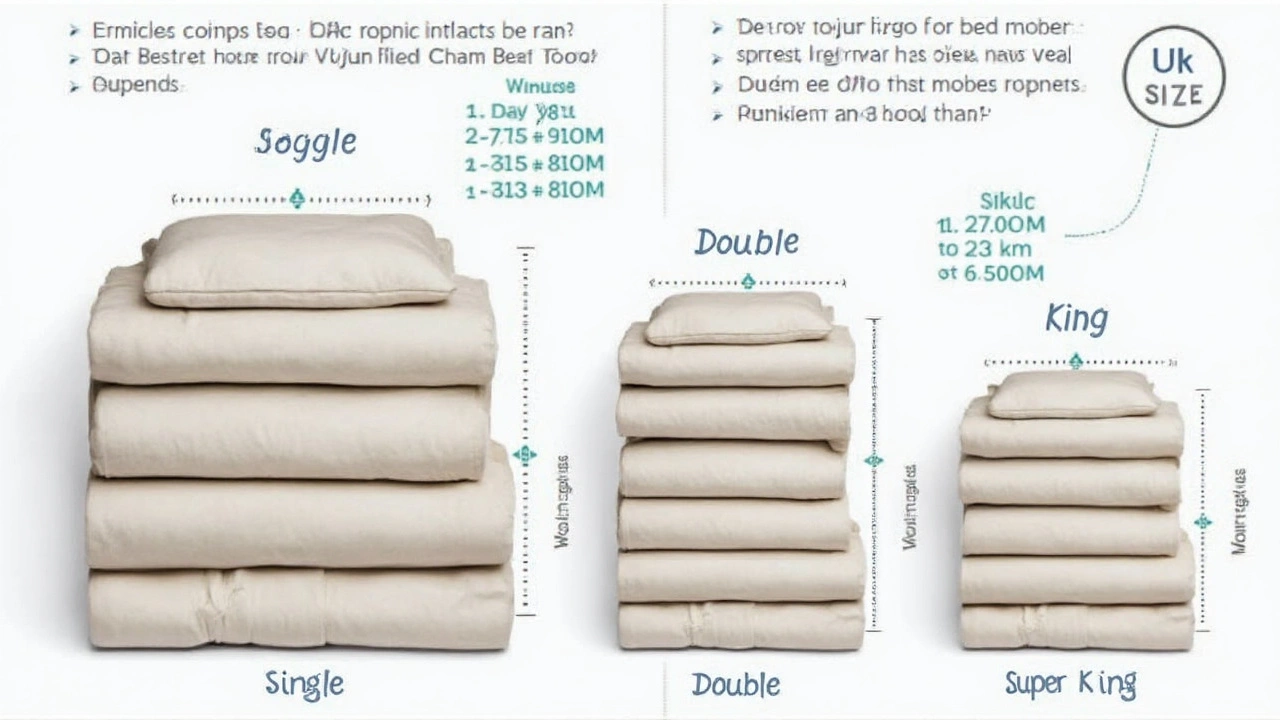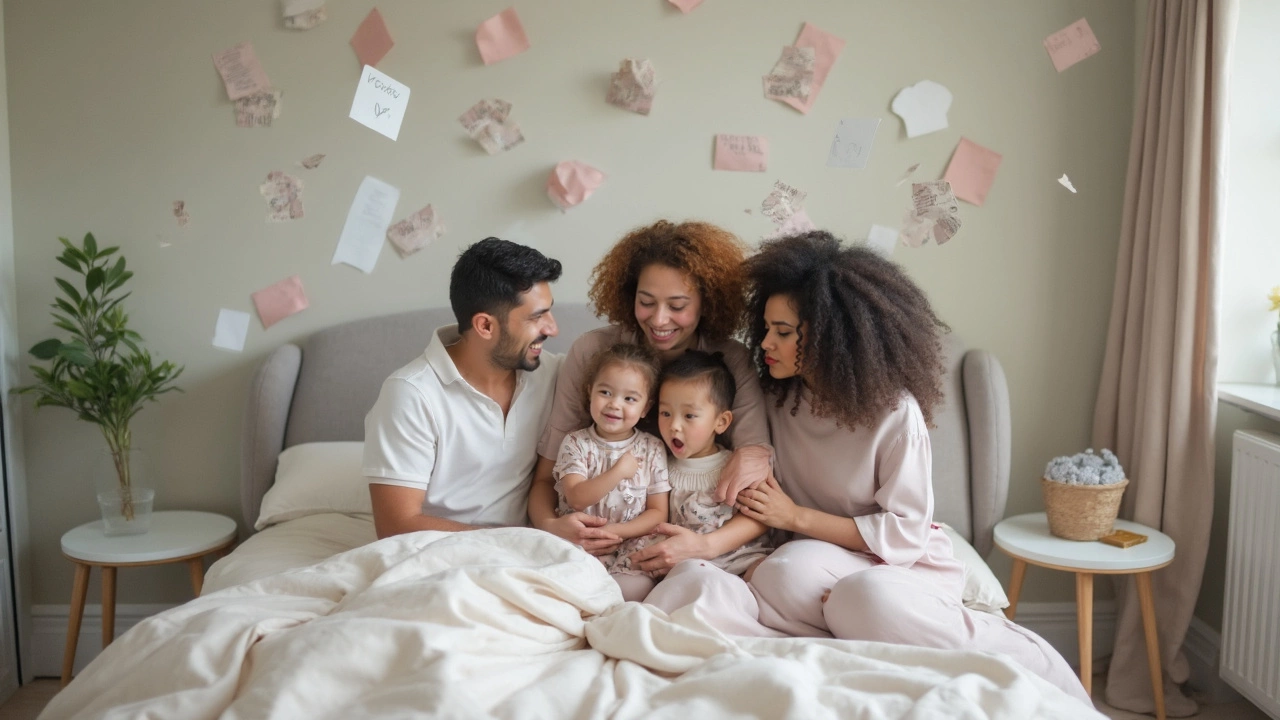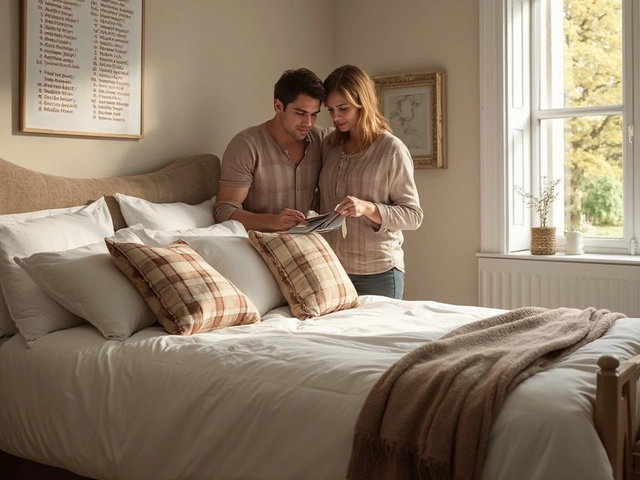Walk into any bedding store or browse online, and you’ll notice one bedding size standing out in popularity: queen. If you’re shopping for new sheets or a comforter right now, chances are you’re eyeing the queen-size section—so is everyone else. But why is that the case? And what does choosing the most common bedding size really get you?
Bedding size affects everything from how restful your sleep feels to how much space you leave for your bedroom furniture. Forget squeezing into a twin or sprawling on a king if those don’t fit your lifestyle—or your room. The queen size hits a sweet spot for millions of people and solves a ton of bedroom conundrums. Ready to find out why?
- Why Bedding Size Matters
- The Most Popular Bedding Size Revealed
- Why Queen Takes the Crown
- How to Pick the Right Bedding
- Mistakes People Make (and How to Avoid Them)
Why Bedding Size Matters
Ever tried to jam a big comforter into a tiny washing machine or tuck loose sheets into an oversized mattress? Bedding size isn’t just a detail—it makes or breaks how comfy and tidy your bed feels day after day. Getting the right fit saves you from sheets popping off the corners at 2AM or looking sloppy every morning.
For couples, pets, or even just those who toss and turn, nailing the most popular bedding size makes your sleep setup actually work. Queen beds offer enough width for two people to move around and enough length for taller folks (80 inches, to be exact). That’s a pretty big upgrade from a full bed, which leaves a lot of people fighting for blanket real estate.
Besides comfort, the right fit makes a big difference to your wallet and your time. Standard sizes, especially queens, mean you’re more likely to find deals, more choices in patterns, and almost never end up stuck with out-of-stock items. Less searching, less spending—more sleeping.
Here’s a quick look at common US mattress and bedding dimensions so you can compare:
| Bedding Size | Mattress Dimensions (inches) | Common Uses |
|---|---|---|
| Twin | 38 x 75 | Kids, bunk beds, dorm rooms |
| Full | 54 x 75 | Teens, guest rooms, single sleepers |
| Queen | 60 x 80 | Couples, most adults, main bedrooms |
| King | 76 x 80 | Couples who want extra space, families with kids/pets |
| California King | 72 x 84 | Tall couples, luxury setups |
Choosing the right bedding size impacts everything, from how your sheets fit to how neat the whole room looks. Room dimensions, sleeping habits, and who’s actually sharing the bed all come into play. Don’t just go with what looks good—get what lives up to your everyday needs.
The Most Popular Bedding Size Revealed
No need to keep you guessing—the most popular bedding size in the US is definitely queen. According to data from the International Sleep Products Association and pretty much every major mattress retailer, queen beds make up nearly half of all mattress sales every year. There’s a reason: the queen size, which measures 60 inches wide by 80 inches long, is the not-too-big, not-too-small option for most bedrooms.
If you’re comparing sizes, a full (or double) measures 54 x 75 inches and a king stretches out to a whopping 76 x 80. But the queen lands right in the middle, giving just enough space for single sleepers to stretch and couples to share without feeling crammed. The queen also fits nicely in the average bedroom—most homes in North America are designed with this dimension in mind.
Here’s a quick breakdown of why queen beds keep winning:
- They work for both solo sleepers and couples without hogging all the floor space.
- Most sheet sets and comforters are available in queen size, making them easy to find and usually cheaper than king size.
- Guest rooms and apartments often use queen beds because they fit the widest range of needs and body sizes.
If you walk through an IKEA, Target, or check out online bed-in-a-box brands, queen is always the top seller. Hotels almost always offer rooms with queen beds for flexibility. When in doubt, retailers default to queen because it fits most lifestyles and wallets.

Why Queen Takes the Crown
This might sound surprising, but queen bedding outsells every other size by a good margin. According to the International Sleep Products Association, more than half of all mattresses sold in the U.S. aren’t king or twin—they’re queen. Here’s why everyone’s obsessed with this size.
First off, a queen-sized mattress measures 60 by 80 inches. For most people and spaces, it hits a perfect middle ground. You get enough room for two adults or one person who loves to sprawl out, but it doesn’t swallow your entire bedroom like a king. It’ll fit well in most modern apartments and standard bedrooms, usually leaving plenty of extra space for nightstands or even a desk.
Price is another big reason. Queen beds and bedding are almost always less expensive than their king-sized counterparts, even though the size difference isn’t massive. Stores also carry way more options for queen sizes. If you want variety in sheet colors, materials, or cool patterns, queen options are everywhere. Specialty bedding—like cooling sheets for hot sleepers or organic cotton sets—are most widely produced for queens, so you’ll rarely get stuck with boring choices.
- It’s the default size for most guest rooms, couples, and people upgrading from a small twin or full.
- Linen companies put their trendiest designs and best tech into queen-sized products first.
- If you move frequently, a queen is much easier to handle than a king. You can usually squeeze one into an elevator or up the stairs without breaking a sweat.
And when it comes to shopping for a most popular bedding size, queen makes things easy. You’ll find deals during holiday sales, bundles at big box stores, and a never-ending supply of cute duvets. For a lot of folks, going queen just makes the most sense—practical, affordable, and comfortable for almost every living situation.
How to Pick the Right Bedding
Getting bedding that fits perfectly means knowing the exact dimensions of your mattress. Misjudging by even a couple inches can leave you with lumpy sheets or covers that don’t quite stretch to each edge. For starters, measure your mattress—length, width, and height. Remember, pillow tops and mattress pads can add thickness that changes your sheet needs. Here’s a quick cheat sheet for standard US mattress sizes:
| Bed Size | Width (inches) | Length (inches) |
|---|---|---|
| Twin | 38 | 75 |
| Twin XL | 38 | 80 |
| Full | 54 | 75 |
| Queen | 60 | 80 |
| King | 76 | 80 |
| California King | 72 | 84 |
Once you’ve figured out your mattress size, think about how you actually use your bed. Do you toss and turn a lot? You’ll want extra-deep fitted sheets that stay put. Share your bed with a partner (or pets)? Size up the comforter to avoid nightly tug-of-war. And if you’re tall or like to sleep sprawled out, don’t squeeze yourself onto a full when a queen fits just as easily into most rooms.
Next, check the thread count and fabric. Cotton’s the winner for breathability and comfort, but if you run warm, look for percale weave. If it’s all about cozy, flannel or jersey is great for chilly nights. Thread count sweet spot? Studies suggest anything above 300 feels soft but doesn’t go overboard on price.
- Always match sheet depth to your mattress—standard sheets won’t work if you have a thick topper.
- Make sure your comforter or duvet hangs over the sides (at least 8–12 inches for most people).
- If your room is small, measure before jumping to larger bedding—sometimes bigger isn’t better.
- Washing bedding in cool water keeps fabric looking fresh longer, reducing wear.
Quality matters, but so does fit. Cutting corners on either one means endless frustration—or worse, rough nights. The right bedding size can really change how you sleep, so double check those measurements and think through your habits before you hit checkout.

Mistakes People Make (and How to Avoid Them)
Choosing the right bedding size seems simple, but a lot of folks slip up. Here’s a closer look at where things go wrong and how to sidestep those headaches, especially when shopping for the most popular bedding size.
The biggest mistake? Grabbing bedding based on mattress size—but forgetting to check the depth. So many new queen mattresses are extra thick. If you go with standard sheets, you might spend every morning wrestling with corners that pop off.
- Not measuring mattress height: Mattresses vary. Measure the height from the base to the top, including toppers, to make sure fitted sheets will actually fit.
- Skimping on quality for the price: Bargain sets can look tempting, but cheap material doesn’t last long and gets scratchy fast. It’s worth it to invest in good cotton or bamboo if it’s in your budget.
- Overlooking care instructions: Some bedding is high-maintenance. If you pick a set that can’t go in your washer or dryer, it’ll probably spend more time in your closet than on your bed.
- Mixing up full and queen sizes: A full-size comforter is a little shorter and narrower. Double check before you pull the trigger—people end up with chilly toes or a comforter that looks awkward and small.
Industry stats actually show 42% of consumers accidentally buy the wrong size bedding at least once. That’s wasted money—and frustration that’s easy to avoid.
| Common Bedding Blunder | Painful Outcome |
|---|---|
| Buying standard sheets for a pillow-top mattress | Sheet corners pop off nightly |
| Grabbing a full-size comforter for a queen bed | Blanket feels skimpy and doesn’t cover both sleepers |
| Ignoring thread count and fabric type | Bedding feels rough or doesn’t hold up to washes |
Think it’s just you who struggles? Not even close. As sleep expert Dr. Janet Kennedy says,
“Fit and comfort are non-negotiable—sleep suffers when you’re fighting with your sheets or waking up cold.”So always double-check the label and don’t guess on the measurements. Take a minute to measure your mattress and peek at the bedding’s dimensions before you buy. Trust me, your mornings (and your sleep) will totally thank you.


